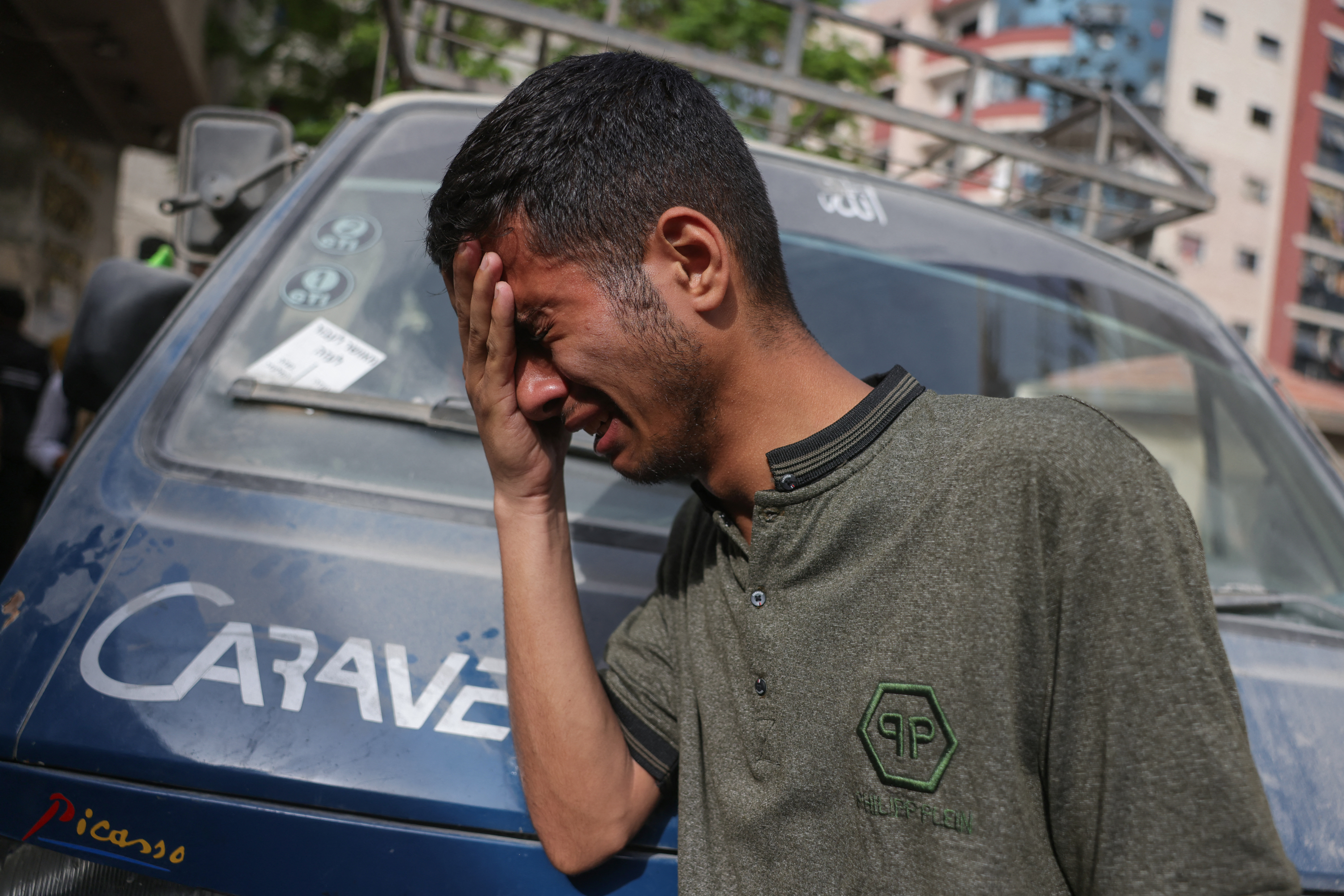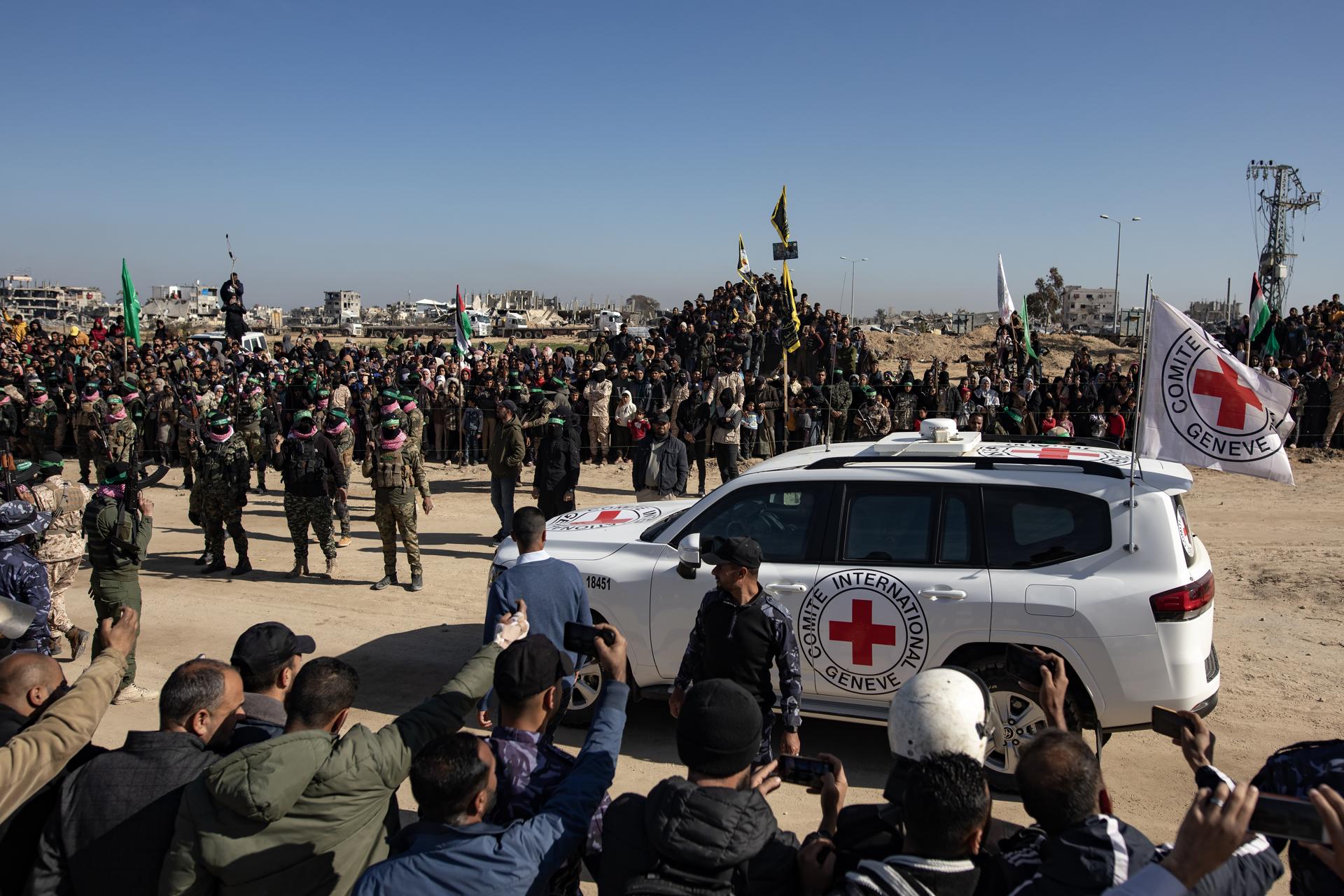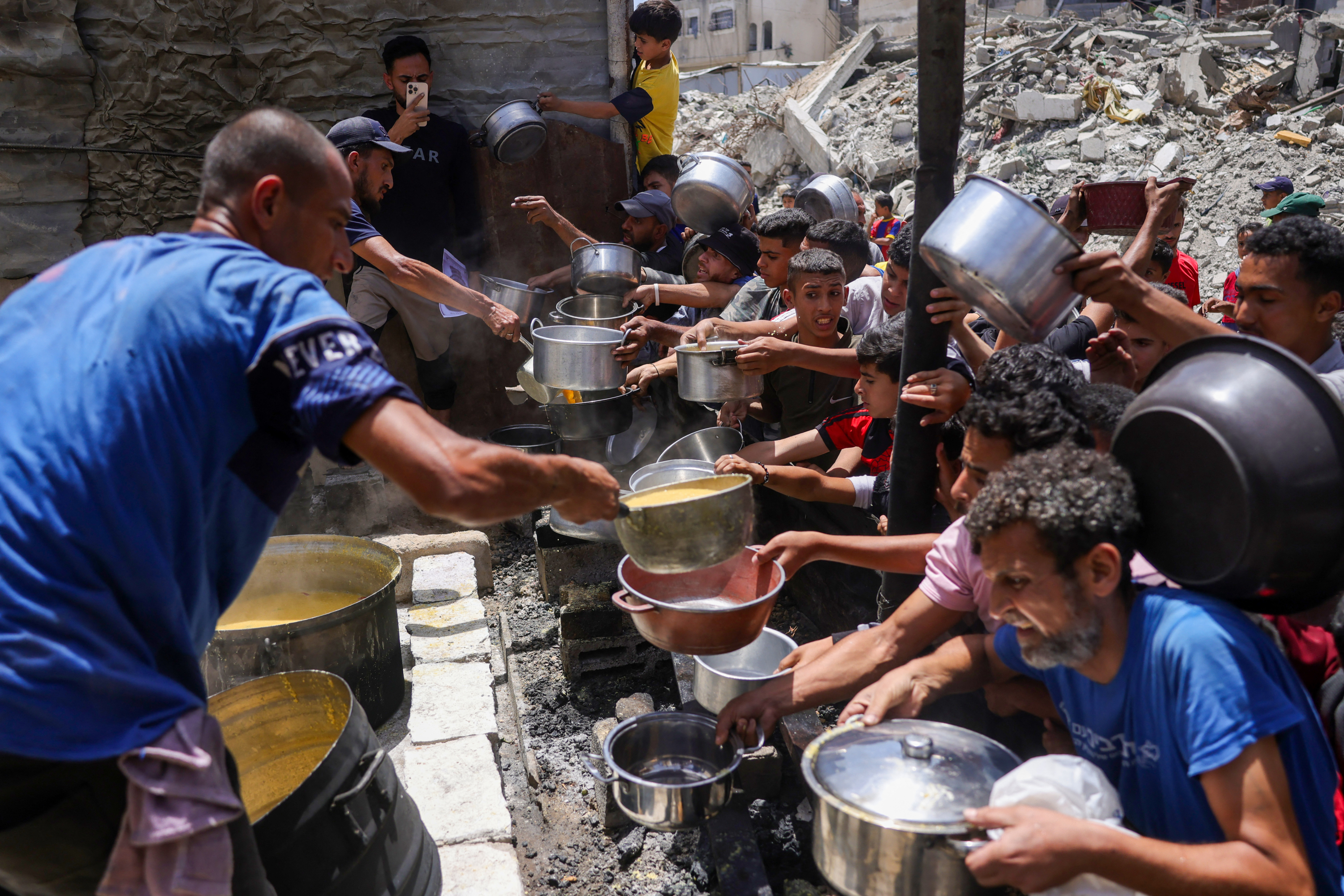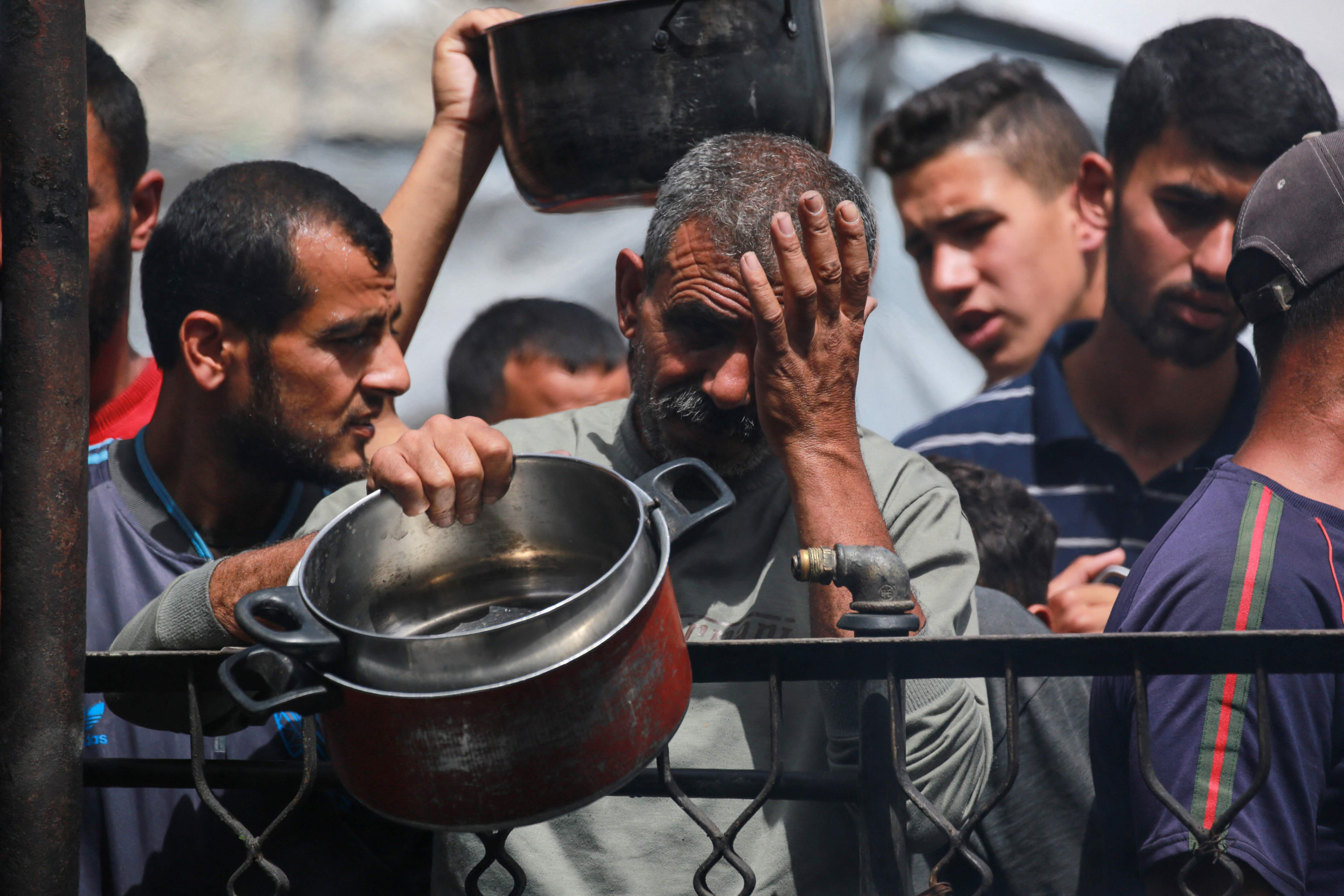How feasible is it for Israel's strategy to end the war in Gaza?

Although Israel stated this Sunday that it is open to reaching an agreement with the Palestinian terrorist group Hamas that includes an "end to the fighting" in the Gaza Strip, its main condition is that the Islamist movement leave the territory.
All this comes just as the Israeli army announced the day before that it had launched "extensive bombardments" to "take control of areas of the Gaza Strip" and achieve its war objectives, which include the release of hostages and the defeat of Hamas, which has ruled the enclave since June 2007 following the expulsion of the Palestinian Authority from the area.

A Palestinian cries outside Al-Shifa Hospital in Gaza City. Photo: AFP
With at least 130 deaths reported in recent hours by the Gaza Civil Defense, more than 460 people have now died in Israeli bombings against the Palestinian territory in one week.
As Hamas leaves Gaza, Israel also demands that it release all the hostages it still holds —58 in total, of whom 35 are known to be dead, 20 alive, and three others in doubt—and that it lay down its arms.
How likely is this agreement to be reached? Here's how.
Israel's dual strategy to end the war in Gaza While Israel is intensifying its operations in the Gaza Strip, its representatives and Hamas have begun indirect talks in Qatar, which the Islamist movement claims are aimed at ending the conflict.
In a statement, Israeli Prime Minister Benjamin Netanyahu's office said the deal "would include the release of all hostages, the exile of Hamas terrorists, and the disarmament of the Gaza Strip."
But while Netanyahu opposes ending the conflict without a complete defeat of Hamas , the Palestinian group has been reluctant to hand over its weapons as the intensified bombing comes amid mounting international pressure over the dire humanitarian conditions in Gaza due to the blockade imposed by Israel since March 2.

A Red Cross representative (R) speaks with a Palestinian Hamas fighter. Photo: EFE
In November 2023, Israel agreed to a first ceasefire and the release of Palestinian prisoners in Israel to recover 105 hostages. On January 19 of this year, it again agreed to a cessation of hostilities to receive a second group of hostages. This agreement was extended until the end of February, with the return of 38 detainees, in addition to dozens of Palestinian detainees.
However, since March, Netanyahu's narrative has focused on emphasizing that his goal is a disarmed Hamas , without which he will not accept an end to the war under any circumstances. This has earned him serious unpopularity in Israel, where 70 percent of citizens consider the return of the remaining hostages a priority.
Netanyahu has therefore opted to push forward partial formulas rather than commit to an immediate end to the fighting.
What does the United States propose regarding the war in Gaza? A longtime ally of Israel, the United States has taken steps in recent weeks that appear to demonstrate that it does not support a full-frontal war on the ground, as Netanyahu desires.
The U.S. special envoy for the region, Steve Witkoff, emphasized a few days ago that, while President Donald Trump remains committed to the Jewish nation, Washington will at all costs seek "a diplomatic solution," which is the path by which most captives have been released and the one "preferred by everyone."

Red Cross vehicles during the handover ceremony for three Israeli hostages. Photo: EFE
What seems to be on the table these days in Qatar is the "Witkoff model," which involves the release of 10 live hostages and some of the dead.
Especially since Trump himself denounced last Friday that "there are many people starving" in Gaza, which is under an Israeli blockade, and where rescuers reported more than 70 deaths in new attacks in recent hours.
"We're looking at Gaza. And we'll take care of that. There are a lot of people starving" in the Palestinian enclave, the Republican said at the end of his tour of the Persian Gulf.
However, this solution also fails to satisfy the families of the hostages, who argue—among other reasons—that no one has the right to select which hostages would be released.
And, in any case, Netanyahu says he is convinced that, in order for Hamas to accept a deal, it is imperative to increase military pressure, something that the head of the Israel Defense Forces, Lieutenant General Eyal Zamir, agrees with, although he acknowledged days ago that the operation could endanger the hostages.
Currently, five brigades are operating in Gaza , and there are clear signs on the ground that the operation is progressing. The big question is whether what hasn't been achieved in 19 months will be effective now.

Displaced Palestinians gather to collect food parcels in the northern Gaza Strip. Photo: AFP
Meanwhile, the humanitarian situation continues to deteriorate. Health officials in Gaza have reported hundreds of deaths in recent days, including 130 deaths during recent nighttime attacks. The fuel shortage has paralyzed medical centers and cut off drinking water supplies in several areas of the enclave.
On Monday, the World Health Organization (WHO) warned that two million people are starving in Gaza, despite "tons of food blocked at the border," it said.
Hours later, it was announced that nine trucks carrying UN humanitarian aid had been authorized to enter the Gaza Strip on Monday , the UN humanitarian official said, calling it a "drop in the ocean" after 11 weeks of Israeli blockade.
Israel's permission to resume aid deliveries to the Palestinian territory "is a welcome development that must be maintained," although this amount "is a drop in the ocean, and much more aid must be allowed into Gaza starting tomorrow morning," Tom Fletcher said in a statement.
The Israeli Foreign Ministry announced that the trucks are transporting baby food.

Palestinians wait for food. Photo: AFP
At least 71,000 children under the age of 5 will be severely malnourished in the next 11 months, and some 17,000 mothers will require urgent treatment for acute malnutrition, according to World Health Organization estimates.
According to multilateral organizations, 469,500 people could reach "catastrophic" levels of malnutrition.
Jana Beris – EL TIEMPO Correspondent - Israel
eltiempo





